- Home
- Mark Frost
Twin Peaks: The Final Dossier
Twin Peaks: The Final Dossier Read online
Begin Reading
Table of Contents
About the Author
Copyright Page
Thank you for buying this
Flatiron Books ebook.
To receive special offers, bonus content,
and info on new releases and other great reads,
sign up for our newsletters.
Or visit us online at
us.macmillan.com/newslettersignup
For email updates on the author, click here.
The author and publisher have provided this e-book to you for your personal use only. You may not make this e-book publicly available in any way. Copyright infringement is against the law. If you believe the copy of this e-book you are reading infringes on the author’s copyright, please notify the publisher at: http://us.macmillanusa.com/piracy.
Acknowledgments
This is the seventeenth and last book I’ve created with the support, counsel, and unerring human intelligence of the late Ed Victor, my literary agent and good friend for thirty years. A lion of letters, literature, and culture, there’s scarcely a publishing professional on two continents who has not benefited in some way from Ed’s presence, influence, or companionship in their lives. Those of us fortunate enough to have been his clients will tell you those effects were never less than profound. For myself, I cannot imagine the journey I’ve followed—from aspiring writer to author—taking place without him.
There are, as always, many to thank for their help with this volume, but—just this once, in the wake of Ed’s stunning absence—I defer those expressions of gratitude and ask Bob Miller, Colin Dickerman, Will Schwalbe, Paul Kepple, Marlena Bittner, and James Melia to join me in saluting a man who helped our business find its better self, and by doing so made this harsh world a kinder and more civilized place.
TWIN PEAKS: The FINAL DOSSIER
FEDERAL BUREAU OF INVESTIGATION
Philadelphia, Pennsylvania
INTEROFFICE MEMORANDUM
DATE: September 6th, 2017
FROM: TAMARA PRESTON, Special Agent
TO: GORDON COLE, Deputy Director
Dear Director Cole:
Pursuant to your directive to me upon the completion of my investigation into “The Archivist’s Dossier” last year, I hereby submit my subsequent follow-up report.
That archive—which ended abruptly on March 28, 1989, with the Major’s sudden disappearance and presumed death—left us with many possible avenues of investigation. As you suggested to me at the time, I have since directed my own investigation “down every rabbit hole and up every apple tree” in search of answers. To state it more plainly, I’m “The Archivist” now.
Unlike the previous dossier, where for the most part all documents were presented to us in their entirety, per Bureau standards, here I have taken the time to condense the relevant content I found into an uninterrupted narrative.
As you also requested, I began this project in the town of Twin Peaks itself, by attempting to bring you up to date on the stories of many of the town’s residents—many of whom you yourself knew personally—over the intervening decades. I learned much that was surprising—your words “these woods are full of secrets” come immediately to mind as a distinct understatement—and many other things reflecting the startling rate of change any community, small or large, faces over the course of a quarter century of recorded history.
The pace of change is extremely hard to perceive at close range—it’s virtually invisible day-to-day—but viewed from a distance, it moves like lightning. The trials and trivialities of daily life, I’ve concluded, act on the mind as a kind of local anesthetic, numbing us to the relentless passage and ravages of time. I’ve also learned—a humbling admission, to be sure—to view this effect as a kind of mercy.
FEDERAL BUREAU OF INVESTIGATIONCLASSIFIED
Philadelphia, Pennsylvania
DATE: TOPIC: SUBMITTED BY:
9/6/2017 THE FINAL DOSSIER PRESTON, TAMARA
SYNOPSIS OF FACTS:
My conclusions and takeaways from this part of the journey—which you also requested of me—I have included from time to time when they apply throughout the document, rather than offering them as a preamble, as I don’t want to shade your perceptions prior to your first read.
On a personal level, I will share with you, however, that regardless of the cost to my innocence or naïveté regarding these truths of the human condition—which I now freely acknowledge at the start was “considerable”—I emerge from this experience grateful for the wisdom it has given me, and stronger of mind for the hard lessons learned.
May I also state that your faith in me to undertake this task, and the opportunity you’ve provided for me to contribute to the collective work that still lies ahead of us, remains one of the authentic blessings of my life.
I only hope that, in whatever small way I can, I’m able to apply my shoulder to that wheel for as long as time and fate allow.
Most respectfully yours,
Tamara Preston, Field Agent
Blue Rose Task Force
FEDERAL BUREAU OF INVESTIGATIONCLASSIFIED
Philadelphia, Pennsylvania
THE ADDENDUM:
This first document is, as you’ll quickly learn, not exactly a “traditional” autopsy report. I assume this was made accessible to you at the time of the incident as a Blue Rose file, but since it was not passed along through traditional Bureau channels—and hardly embraces standard forensic formatting—I am including it in the pursuit of thoroughness.
CALHOUN MEMORIAL HOSPITAL AUTOPSY REPORT EXAMINATION REF. NO.
1989-04/01
JOHNSON, LEO ABEL
On the morning of April 1, 1989, an autopsy was completed on the body of LEO ABEL JOHNSON.
VISIBLE INJURIES: 5 gunshot wounds, numerous spider bites, electrical burns, bruises, cigarette burns
INTERNAL INJURIES: bullet lodged near spine, damage to sinus cavity
Anatomical Summary:
(A) 5 gunshot wounds to upper thoracic
(B) Arachnid bites;
(Tarantula; Theraphosidae)
(C) Electrical burn marks
(D) Cigarette burns
(E) Bruising
(F) Bullet lodged internally near lower lumbar/3rd vertebra
CAUSE OF DEATH:
5 gunshot wounds (A)
It’s not often I’m tempted to begin one of these by suggesting “he made the world a better place by taking early retirement,” but in his case I’m willing to make an exception.
My own interaction with this knuckle-dragger was fleeting, but he left a vivid impression, not unlike the livid marks on his soon-to-be ex-wife’s neck after he nearly strangled her. His entire life span could easily be written off as a scathing indictment of our public education system, but to be fair, you’d probably have to go all the way back to the crossroads where Cro-Magnon and Neanderthal went their separate ways and say: Leo’s forbears took the path less traveled.
So, for starters: It wasn’t the spiders that killed him. Whatever “evil genius”–I’m looking at you, Windom Earle–decided to hoist a bag of tarantulas over his head as a dire threat to Leo’s health obviously wasted far too much time watching cheesy Vincent Price movies and not nearly enough studying arachnids. Tarantulas aren’t ever fatally venomous, dipshit; they just look scary.
I’m going to go out on another limb and conclude that the five gunshots to his upper thoracic area had slightly more to do with the late, lamented Johnson’s tragic demise. Patterned in a punctilious little circle around his heart, with one to grow on dead center. Unfortunately, aside from the killer, it appears that said spiders were the only witnesses.
Observations: The five nine-mi
llimeter slugs were all still in the body–he had, I’ll put it delicately, an excess of mass to help slam on the brakes–and there were no powder burns on his clothes or skin. Ergo, shot from across the room by someone with a low pulse and nifty marksmanship skills. Scuff marks near the door, where it appears the shooter set his feet Bureau style. Just a working theory–because who the hell knows where he’s shuffled off to–but my money’s all on our old pal Windom.
Also: Circular pattern of electrical burn marks around Leo’s neck. A canine shock collar on the floor nearby, sized for a Saint Bernard. Nice: Leo must have made a first-rate slippers fetcher. Massive bruising over most of the body, cigarette burns, signs of malnutrition, even traces of birthday cake in his hair–I’m guessing these weren’t all the residue of occupational hazard as a long-haul trucker. Windom enjoyed a lot of fun with the poor bastard.
On the other hand, the damage to his nasal passages and sinus cavities–which look like a depleted uranium mine, 80 percent of the cartilage scorched or burned away–appear to be entirely self-inflicted. Like the commercial almost says, things go better with crystal meth. That goes double if you’re trying to keep your eyes peeled all night while hauling a load of cheap mattresses from Boise to Bishop.
This interested me: Leo also had a bullet lodged near the third vertebra of his lower lumbar spine. Conclusion: This is an earlier injury from a different weapon–from a .22 caliber–for which he had been treated some weeks earlier at the local hospital. The IC resident’s diagnosis from that time noted Leo as suffering from paralysis of the extremities, but concluded that once surrounding inflammation subsided he might–and apparently did–recover the use of his limbs, if not his senses.
So, you might well ask, who shot Leo the first time?
According to the jacket meticulously assembled on our hero by–as they charitably refer to them here in East Rubesville–local law enforcement, Leo evolved from consumer to trafficker at some point in his sunset years. Going by the peek I took inside his cranium, impairment of moral judgment would have been the least of his symptomatic responses. He’d clearly suffered a cerebral hemorrhage within his last few weeks of life, but I’ll spare you the clinical verbiage, Chief; his brain looks like a dog’s breakfast, if your dog liked garbage with his scrambled eggs.
With his sudden departure, Leo Johnson left little behind aside from his badly used Corvette, bought a few months prior to death with a suspect amount of cash; the truck cab he used for his hauling business, repossessed by the leasing agency, postmortem; a ramshackle bungalow on the outskirts, also repo’d by the bank, postmortem; and his young widow, a hash slinger at the Double R Diner, Shelly McCauley Johnson. Known to you, I recall, as “the girl I’d most like to take to the prom.”
By the way, forgive the stains on this page; writing this as I enjoy yet another delicious and oh-so-flaky chicken pot pie–third night in a row!–from that same local quarter-star bistro, the greasy spoon you keep raving about with the pie and the coffee. Pardon me, Gordon, but on the whole, to quote William Claude Dukenfield,
I’d rather be in Philadelphia, where you are undoubtedly luxuriating at this very moment in your silk smoking jacket, enjoying a fruity French Bordeaux with another one of your imported “nieces.”
Sorry. Trigger warning: Repeated and prolonged proximity to moribund logging communities set off my misanthropy. But indulge me long enough to offer a brief moment of sociological commentary: If the good folks of burgs like these would put down the remote and the beer or the bong and stay out of their “off-road vehicles” and duck blinds on weekends in order to punch the clock on some career counseling or community college, they might have a fighting chance to switch horses when the Turk comes to shutter their nineteenth-century industrial meal ticket. ‘Cause the Turk is coming. The world is changing pronto, Chief, and now that these salt-of-the-earth “country volk” realize they’ve been left behind, it’s going to be sheer hell playing catch-up. (I know, I know, I’m a raging asshole.)
And speaking of entrepreneurial initiative, here’s a no-brainer: Why don’t some of these enterprising yokels kick-start a craft brewery here in town? They’d instantly attract an endless stream of thirsty proles, and the only competition is swill.
Enough community building for one night. To sum up: Leo Johnson’s dead. Having a hard time arguing that the local landscape isn’t trending upward because of it.
Next case. Save me a glass, you cosmopolitan swell.
–Albert
PS: The recent body count from this little criminal corner of town is officially way off the actuarials: Jean Renault, Jacques Renault, Leo Johnson, and some other dirtbag drug dealer in the woods whose melodious name escapes me. When I brought this trend up to Sheriff Harry Truman–or, as I like to call him, Chatty Cathy–he replied:
“Well … makes my job a whole lot easier.”
initial
FEDERAL BUREAU OF INVESTIGATION Field Office Criminal Investigative and Administrative Files
At a glance, Shelly’s story reads as depressingly familiar: The only child of a dysfunctional local marriage that ended in early divorce, exacerbated by alcoholism and repeated incidents of spousal abuse. Shelly lived with her mother after the split—her father fled the state and disappeared—and Shelly left home for good at seventeen. While her Twin Peaks High School transcripts paint a portrait of a bright and promising student, she dropped out at the end of her junior year when Leo Johnson—six years her senior—suddenly careened into her life.
(My understanding is that you hold a personal fondness for Shelly, Chief, so I’m including a few more details here than I might have otherwise.)
According to a formal inquest conducted in the aftermath of Leo’s death, these facts emerge:
A covert relationship between Shelly and Laura Palmer’s putative boyfriend Bobby Briggs appears to have overlapped a large percentage of her nearly two-year marriage to Leo. Corroborated testimony also suggests that this relationship with Bobby during high school predated Leo: Bobby and Shelly were, in fact, contemporaries who had known each other going all the way back to elementary school.
One fellow student vividly recalled this: When Shelly realized Bobby was two-timing her with Laura, she confronted him in an angry public scene that disrupted the junior prom. She stormed out in her prom dress and, as fate would have it, decamped to a local adult venue known by its sign as the Bang Bang Bar, but more colloquially as The Roadhouse. Although she was underage at the time, a laissez-faire attitude toward the serving of underage patrons—it appears she knew the bartender on duty that night—resulted in Shelly downing a couple of beers before Leo Johnson, who had just rolled in from a road trip, intervened to gallantly procure for her a few more potent illicit cocktails, and before the night was over, one thing led to another.
Cutting, as they say, to the chase, Leo and Shelly obtained the necessary paperwork and appeared before a local justice of the peace exactly three weeks later—the justice noted dryly in his remarks that the young couple stated they were “celebrating their third anniversary”—and tied the knot.
You might well ask: What could possibly go wrong? As we now know, everything that could did.
Within a few weeks of Leo’s passing—let’s charitably call this the observation of a designated mourning period—Shelly and Bobby began to appear together around town in public places, clearly a couple again, joined in grief, most assumed, by the deaths of their respective former partners.
I would, however, be remiss if I neglected to point out that, according to the case file, these two were also considered and subsequently cleared by law enforcement as prime suspects in Leo Johnson’s murder. The emergence of at-large fugitive Windom Earle as the more probable culprit ultimately led investigators to conclude that, while evidence indicated they were far from blameless in Leo Johnson’s downfall, Shelly and Bobby were, at best, not guilty and, at worst, seen as not likely to be successfully prosecuted.
One year after Leo’s death, al
most to the day—perhaps Shelly had learned something from the dictum “marry in haste, repent in leisure”—Bobby and Shelly were formally wed during a weekend getaway to Reno. Family did not attend.
Their now legal union, within seven months—timing that seems to have influenced this sudden decision to book a flight to Nevada—produced a daughter, Rebecca McCauley Briggs. Shelly’s estranged mother died that same year, at forty-seven—cirrhosis of the liver—but Bobby’s mother, Betty, grieving the recent loss of her own husband, stepped up to the plate, devoting herself to providing her son and his new wife a stability they sorely needed for their new family.
And as she had done since the day Shelly began working at the Double R, proprietor Norma Jennings—soon to lose her own hardened criminal husband, Hank, with far fewer regrets, in a prison shanking—played the role of the surrogate mother that Shelly had always needed. Norma and Betty joined forces to cosign a loan that allowed Bobby and Shelly to buy their first house. Within a year of Leo’s death, when she turned twenty-one, Shelly now had a home, a husband she loved, a beautiful child, and a supportive circle of friends and customers at a job she adored. As the saying goes, it takes a diner to raise a child.
Of all the personal stories I’ve now surveyed in Twin Peaks, Shelly seems one of the luckiest ones. But then, as you well know, Chief, most stories have more than one act. I’ll return to this one—and to Deputy Briggs—presently.
FEDERAL BUREAU OF INVESTIGATION Field Office Criminal Investigative and Administrative Files
During this same time frame, something curious and well under the radar occurred one night at the home of one of the town’s most beloved citizens and its widely admired general practitioner, Dr. Will Hayward. I’ve assembled the following pieces of information I’ve been able to collate into the following scenario, which feels like the most reasonable explanation.

 Rogue
Rogue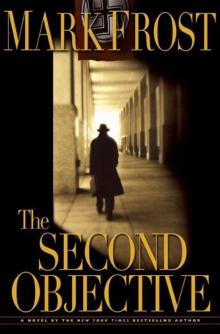 The Second Objective
The Second Objective Alliance
Alliance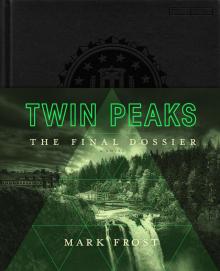 Twin Peaks: The Final Dossier
Twin Peaks: The Final Dossier The Paladin Prophecy
The Paladin Prophecy Game Six: Cincinnati, Boston, and the 1975 World Series: The Triumph of America's Pastime
Game Six: Cincinnati, Boston, and the 1975 World Series: The Triumph of America's Pastime The List of Seven
The List of Seven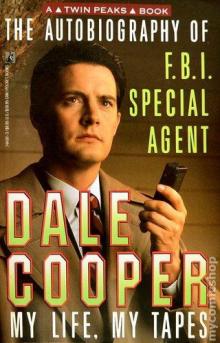 The Autobiography of FBI Special Agent Dale Cooper
The Autobiography of FBI Special Agent Dale Cooper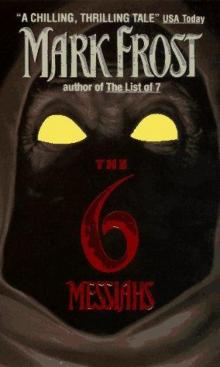 The Six Messiahs
The Six Messiahs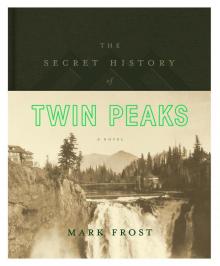 The Secret History of Twin Peaks
The Secret History of Twin Peaks Paladin Prophecy 2: Alliance
Paladin Prophecy 2: Alliance Game Six
Game Six